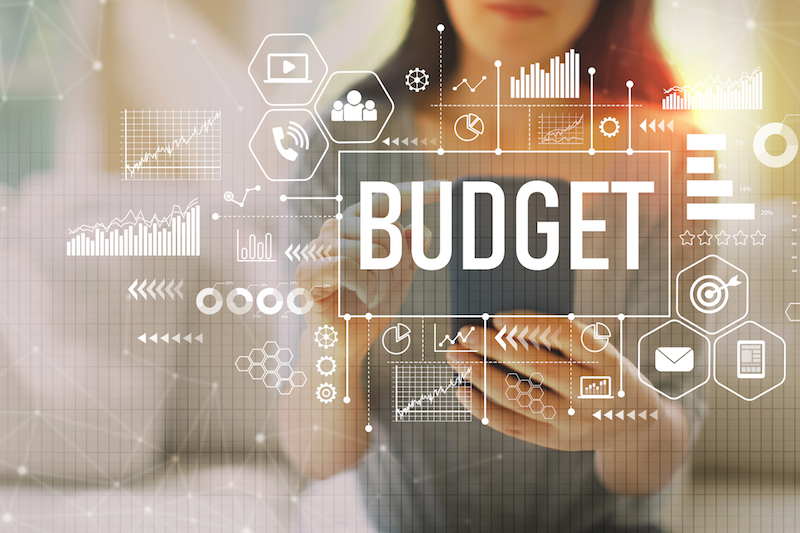
Many of our clients ask us what accounting or budgeting software we recommend.
We don’t.
In our experience, budgeting and accounting software often inhibits people from learning about their finances, rather than helping them understand it better.
It’s not the software’s fault. Accounting software is incredibly useful when tax-time comes around, and budgeting software can be a time-saver if you already know how to budget effectively.
 Most of our clients don’t know how to budget properly, though. And doing their taxes seems like the worst nightmare imaginable.
Most of our clients don’t know how to budget properly, though. And doing their taxes seems like the worst nightmare imaginable.
We always recommend to everyone that they start their journey of financial education by avoiding the expense of purchasing accounting or budgeting software.
Instead, they should use the Envelope Method… and it doesn’t cost a dime.
The Envelope Method isn’t fancy. It isn’t high-tech. It won’t auto-calculate anything.
It’s absolutely perfect for those who want to learn more about their money.
Why Software Gets in the Way
If you understand your finances and how money works, then software is simply a shorthand version of what you already know. You can look at a spreadsheet and immediately understand what physically happened in the real world to make those numbers line up the way they did.
You’ll notice that there’s a bit more spending in February on groceries and recall that you spent a little extra for a dinner party. Which you decided to make up out of … yes, there it is, out of the ‘eating out’ budget category.
If you’re new to looking at your finances, though, you’re not going to be thinking about the story behind the numbers.
What you’re most likely going to do is try to get them to tally “correctly”.
You’ll move money from one place to another until your budget looks right. You’ll try to reconcile what it says you spent in your bank account with the numbers that were auto-pulled to the software.
It won’t be clear to you at all what happened over the course of the last few months or what you might need to change in the future to make the numbers come out differently.
You can almost certainly figure out how to make the numbers in your software line up nice and neat if you work at it hard enough.
What you won’t be able to do is change your spending and saving habits.
The Envelope Method helps you to do just that.
What’s the Envelope Method?
Back in the day, when getting paid meant getting cash in your hand, people would make sure they had enough money for their bills by portioning amounts into paper envelopes, according to thir budget.
In the rent envelope, they’d put exactly the amount they needed to pay the rent. In the groceries envelope, they’d put the amount they’d budgeted for groceries. In the gas and transportation envelope… you get the idea.
Today, how we get paid and receive income has changed. Income often gets deposited into your bank account without any cash or cheque ever changing hands.
You can still use the Envelope Method to manage your money – it’s just a virtual version of the old-school paper envelope method.
You certainly already have a main chequing account and can use that for your regular monthly bills (like rent, cable and car loan), but you can open several savings accounts and use each as ‘electronic’ envelopes. Each savings account represents a major category of spending.
You can have a ‘travel’ savings account. A ‘home maintenance’ savings account. A ‘gift’ savings account. You can even have a savings account you call “paying down debt” or “Suzy’s summer camp” or “fun and extras”.
When income gets deposited into your main chequing account, transfer portions of it into your savings account. You can use these accounts to save up for various expenses (like ‘travel’) or certain goals (like Suzy’s summer camp).
This ‘electronic’ envelope helps you stay on track with your money and spending, because you can’t cheat. You can’t dip into your chequing account for an impulse-buy pedicure when you’ve already transferred available money away to your ‘travel’ savings account.
To get that pedicure, you’d have to make a conscious, deliberate choice of taking a few minutes to transfer money away from ‘travel’ and back into chequing where you can spend it easily.
Those few minutes and that forced deliberate choice are often enough to give you pause for thought and choose instead NOT to self-sabotage your own financial goals for a moment of pretty toenails.
Why Does the Envelope Method Work?
The envelope method comes from the idea that most people have trouble managing their money because they’ve stopped thinking about it as a finite entity.
Credit cards let you rack up a few thousand dollars’ worth of spending very quickly. That money doesn’t even seem real. You never saw it. You never touched it. It never appeared in your bank account or on your tax returns. It’s just there when you need it. Like magic.
The magic ends quickly when the bills come in and that debt starts racking up, of course.
The envelope method helps you see your money in much more concrete and physical terms. What’s in your electronic envelope is earmarked, and it’s all you have. As you spend, you have less. Don’t spend, and your envelope stays full.
The envelope method helps because you’re no longer deciding whether you should dip into your magically endless stream of credit to buy those $10 impulse items at the grocery store – you’re making a concrete decision at the checkout line as to whether you should put back the magazine and candy bar or the chicken and apples.
When you start seeing what you really use your money for, you use it a little more deliberately.
Software can’t do that for you. Software makes money seem just as ephemeral and unreal as credit cards do – which is why it’s best left for people who already fully understand how concrete and finite money really is.

